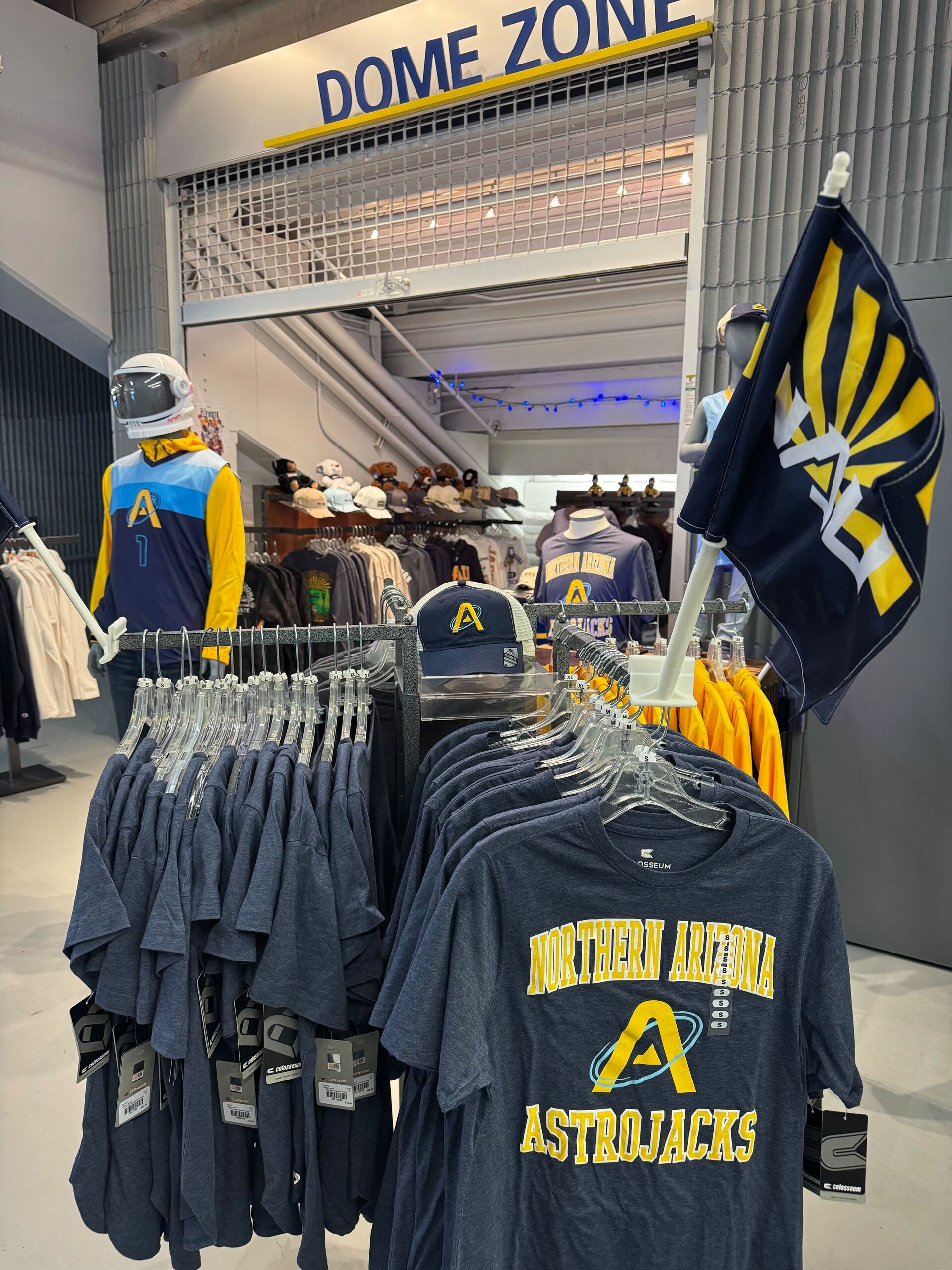Good morning, and thanks for spending part of your day with Extra Points.
My vacation in Brazil is coming to an end, which means our run of guest posts is also wrapping up. Today’s newsletter comes to us from KC Smurthwaite, a friend of the newsletter who also wrote recently for NIL Wire about creative accounting in the revenue sharing era. Today, he’s asking a question I’m sure you’ll want to know the answer to: Could a D-II or D-III school now be in a decent spot to someday win a D-I national championship?
Let’s get to it:
Yes, you read that correctly: A Division I national championship could easily find its way to Anchorage, Alaska, or Romeoville, Illinois. It could even find its way to Colorado Springs, Colorado — no, not Air Force, but the Tigers of Colorado College.
How, you may ask?
Multidivisional schools.
At your next water-cooler debate, think how the Big East might have a competitive advantage in the revenue-share era; after all, it doesn’t sponsor football and has more money to spread across other sports (hi, basketball!). And then take it one step further: Think about the schools that have been living in the NCAA's twilight zone for decades.
I’m talking about those Division II and III athletic departments that sponsor just one, or more likely two, Division I teams. They have already been competing at the highest level for years, most commonly in ice hockey or lacrosse. And they, too, can opt into the House settlement. Theoretically, they could field roster of $20.5 million, if they wanted. At that point, let's call it a salary cap.
You probably missed these multidivisional questions in the Q&A the NCAA published June 13 about the implementation of the House settlement. After all, they impact such a small number of schools. But they could have a major impact nonetheless.
Get the Data You Need with Extra Points Library

Want to compare data across hundreds of athletic department budgets? Want to know who reported the most ticket sales in the Ohio Valley Conference? What school earned the most revenue from Sports Camps? Who earned the most licensing revenue in the Big Ten? We’ve got you covered with the data you need to make the right decisions.
We have over 7,000 athletic department budgets, coach contracts, vendor contracts, and other critically important PDFs. And we’re a week or two away from revenue and expenses per sport and by school. Search for the documents you need here.
Get the data you need at Extra Points Library.
Here's what the official Q&A says:
Question A5: May a Division I team at a multidivisional institution (e.g., Division II or III institution) opt in to the settlement?
Answer: Yes.
Question A6: If a multidivisional institution has two Division I sports, can it opt in for one of the Division I sports but not the other?
Answer: No. If the multidivisional institution opts in, requirements apply to all Division I sports.
Question A7: Is a multidivisional institution that opts in subject to the same benefits cap as other Participating Institutions?
Answer: Yes.
It all makes me stop and think about what actually might be possible: Could a single-sport or two-sport D-I program at a multidivisional institution really go all-in for a year? Imagine if a wealthy donor were to step in and say, "Let's try this experiment. Let's bring a championship to the Alaska Anchorage Seawolves or the Beavers of Bemidji State." Could a Colorado College alum who owns a production company bankroll the whole thing and film a yearlong documentary about the journey?
It would make for great television.
But for some of the athletic directors tasked with actually making those decisions, the reality is much more nuanced.
At Colorado College, which sponsors D-I men's hockey and women's soccer while fielding all other programs at the D-III level, director of athletics Lesley Irvine said she sees opportunity — but not without limits.
"We've had a lot of conversations at the conference level, which is where a lot of this is happening, to say, okay, what are you all doing? What does it look like?" Irvine said. "We obviously have a lot of flexibility with the cap because we've only got those two Division I sports to think about. So, in theory — again, in theory — we could, between those two sports, be fielding a [$20.5 million] team. On paper, the rules would allow it."
"Do I see that being something the market would call for? And would we do anything that flies in the face of the values of the college? No,” she added. “What's fun is we talk about the value of the Colorado College education and everything else we offer as part of the package we put together for student-athletes."
For Irvine, the bigger picture is about balancing ambition with institutional philosophy. "We've always been committed to competing at the highest levels in our Division I programs," she said. "We're trying to get a sense of how all this is going to impact the marketplace truly. It's going to take at least a year to settle down. But we want to and will chase championships here."
Thousands of miles away in Anchorage, Seawolves athletic director Ryan Swartwood described a similar balancing act. "As a multidivisional school, we sponsor Division I men's hockey and women's gymnastics," he explained. "We'd need to opt in for both sports. Roster limits are a concern; we typically carry more than the limit for depth reasons, so for now, we elected not to opt in.
"I'm in regular communication with ADs across the industry, and the environment is dynamic. We plan to monitor and make the best decision for 2026-27 with all of our programs in mind."
Even schools that have already opted in, such as Johns Hopkins — which did so automatically as an affiliate member of the Big Ten — still share in that uncertainty. Johns Hopkins competes in Division I men’s and women’s lacrosse, and its other sports remain in Division III. The Blue Jays have won national championships at the Division I level — their last in 2007 — and the settlement has spurred innovation for generating new revenues.
"We've already set a plan to offer additional scholarships and explore new revenue streams to enhance the student-athlete experience," said Johns Hopkins athletic director Jennifer Baker.

But not every program is in a position to opt in, even if it wants to. Lewis University in Romeoville, Illinois, is the home of a perennially strong men's volleyball program that competes at the D-I level. However, the school’s official classification remains D-II in all sports. The NCAA’s classification rules around multidivisional programs are nuanced — and admittedly unclear — stemming from several changes made prior to July 1, 2012. Those rules suggest that some schools that did not formally reclassify at that time might now be ineligible to reclassify — or at least unable to do so without adding a second Division I sport or navigating additional waiver processes. "Men's volleyball is our flagship program,” Lewis’s assistant vice president for athletics, John Ashaolu, explained. “We know we can compete at the Division I level, but we aren't officially classified as Division I in that sport, which means we weren't eligible to opt in."
Ashaolu said the department is exploring how to change that classification, but the process has changed over the years and might require additional hurdles. "We have the donors, financial, institutional and community support to make the move," he said. "Our brand is already associated with championships, and we know that we can continue with our volleyball program at the D-I level. We are in a great spot and know we can get there."
I reached out to several compliance officers about Lewis’s situation and received varying responses. Some felt Lewis would need to add a sport in order to re-classify in this new era, and others believed there could be a path through multiple waivers — a process that would most likely take years. I also reached out to the NCAA for clarification — about Lewis and several similar cases — but did not receive a response in time for publication. The rules, for now, are a little unclear.
But regardless of NCAA clarification, the rules have changed in several aspects of reclassification. Consider Extra Points reported in the summer of 2022:
When the NCAA went to three divisions in 1973, it allowed Division III schools to classify one non-football/basketball sport as Division I, provided they adhered to Division I rules in that sport. This became known as "multidivisional classification" — and it's been controversial ever since.
In 2004, the NCAA passed Proposal 65-1, which allowed RPI, Colorado College, Clarkson, St. Lawrence, Johns Hopkins, and others to continue offering scholarships to their Division I athletes. But some in the Division III community felt it undermined their division's core philosophy. As Allegheny Mountain Collegiate Conference commissioner Donna Ledwin argued at the time:
"There were two very clear messages that came out of this body. One, that Division III should not offer athletically related aid… Two, this group expressed considerable opposition to multidivisional classification… Instead, they cut these schools a break and said we won't try to take away that tradition, but we do want to put you in line with the Division III philosophy."
The reality is that NCAA reclassification and multidivisional rules have evolved unevenly — including a moratorium on new reclassifications from 2007 to 2011 and periodic tweaks to timelines and requirements since. Schools that want to fully reclassify face steep hurdles, including sponsorship minimums, multiyear provisional periods and financial benchmarks.
For now, the door remains open, but the path is far from clear on a lot of classification aspects. (Just ask Sacramento State.) Rule changes in January added even more hurdles for Division II and Division III schools looking to make the jump.
Could a wealthy donor one day decide to bankroll the ultimate experiment, going all-in to bring a Division I championship to Anchorage, Romeoville, or Colorado Springs? In true “Parks and Recreation” fashion, maybe someone will decide it's time to "treat yo' self," and write the check to make it happen, just to see how far one team can go.
It would be bold. It would be expensive. But we'd all be here for it.
KC Smurthwaite is a consultant for Athletics Admin, specializing in revenue generation, licensing, marketing, and higher education. If you want to continue the conversation, feel free to email him at [email protected], follow him on X or connect with him on LinkedIn, where he loves to break down contracts and talk about money in sports.




















